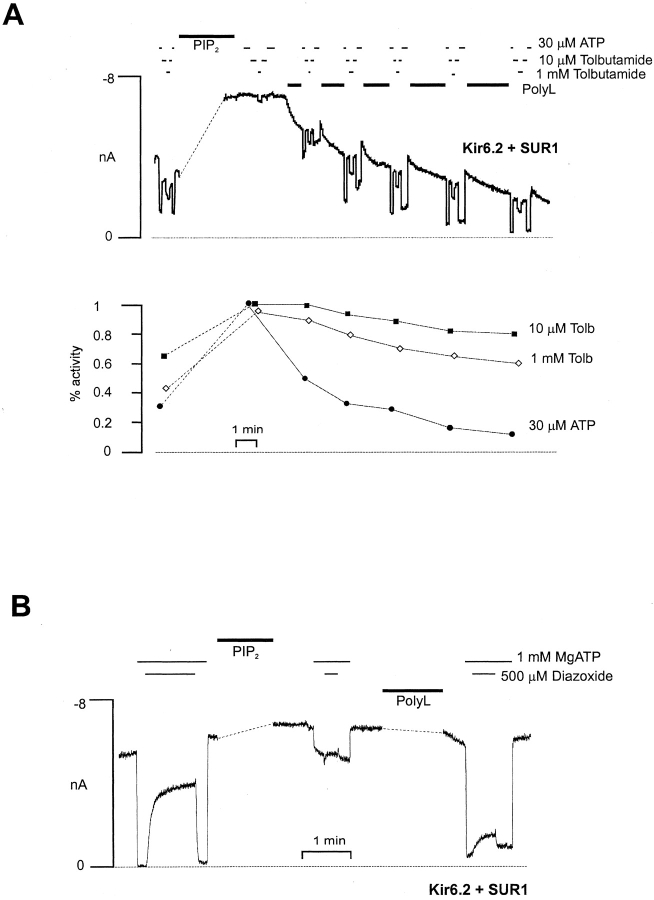Figure 7.
Pip2 effect on tolbutamide and PCO sensitivity is partially reversed by application of poly-l-lysine. (A) Current recorded from representative inside-out membrane patch containing wild-type channels at −50 mV in Kint solution. The patch was exposed to differing [tolbutamide] or ATP, as shown. The dashed line represents a 28-min gap in the trace, during which time Pip2 (5μg/ml) was applied. After Pip2 application, poly-l-lysine (10 μg/ml) was applied as indicated. ATP and tolbutamide sensitivity as a function of time is shown below. Sensitivity was assessed as the activity remaining in ATP or tolbutamide relative to maximal current in zero ATP, zero tolbutamide. (B) Current recorded from representative inside-out membrane patch containing wild-type channels at −50 mV in Kint solution. The patch was exposed to MgATP and diazoxide, as indicated. The dashed lines represent 18- and 13-min gaps in the trace, during which time Pip2 and poly-l-lysine, respectively, were applied.

